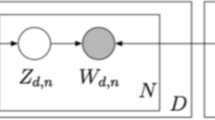Abstract
Large IT organizations every year hire tens of thousands of employees through multiple sourcing channels for their growth and talent replenishment. Assuming that for each hire at least ten potential profiles are scrutinized and evaluated, the Talent Acquisition (TA) personnel ends up processing half a million-candidate profiles having multiple technical and domain skills. The scale and tight timelines of operations lead to possibility of suboptimal talent selection due to misinterpretation or inadequate technical evaluation of candidate profiles. Such recruitment process implementation due to manual, biased, and subjective evaluation may result in a lower job and organizational fit leading to poor talent quality. With the increased adoption of data and text mining technologies, the recruitment processes are also being reimagined to be effective and efficient. The major information sources, viz., candidate profiles, the Job Descriptions (JDs), and TA process task outcomes, are captured in the eHRM systems. The authors present a set of critical functional components built for improving efficiency and effectiveness in recruitment process. Through multiple real-life case studies conducted in a large multinational IT company, these components have been verified for effectiveness. Some of the important components elaborated in this paper are a resume information extraction tool, a job matching engine, a method for skill similarity computation, and a JD completion module for verifying and completing a JD for quality job specification. The tests performed using large datasets of the text extraction modules for resume and JD as well as job search engine show high performance.
Access this chapter
Tax calculation will be finalised at checkout
Purchases are for personal use only
Similar content being viewed by others
Notes
- 1.
LinkedIn™ is a trademark owned by LinkedIn™ recruiting services.
- 2.
F-measure—harmonic mean of precision and recall. F-measure \( = \,\frac{{2{\kern 1pt} *{\kern 1pt} precision{\kern 1pt} {\kern 1pt} *{\kern 1pt} recall}}{precision + recall} \).
- 3.
Kendall’s τ considers rank ordering among entities. It is the ratio of difference between number of concordant pairs and discordant pairs to the total number of ranked pairs possible.
- 4.
tf-idf: term frequency-inverse document frequency is a measure of importance of a word in a document belonging to a corpus or collection.
References
Aggarwal, C. C., & Zhai, C. X. (2012). Mining Text Data (1st ed.). Springer.
Bondarouk, T., Ruël, H., Guiderdoni-Jourdain, K., & Oiry, E. (2009). Handbook of Research on E-Transformation and Human Resources Management Technologies—Organizational Outcomes and Challenges. IGI Global.
Bui, H. Q., & Zyl, L. T. V. (2016). Talent acquisition gamified: Insights from playing the game at PwC Hungary, Master thesis, Lund University, School of Economics and Management.
Dutta, D., Mishra, S., Manimala, M. J. (2015). Talent acquisition group (TAG) at HCL technologies: improving the quality of hire through focused metrics (p. 22). IIMB-HBP. http://research.iimb.ernet.in/handle/123456789/6698.
Edmundson, H. P. (1969). New methods in automatic extracting. Journal of the ACM, 16, 264–285.
Faliagka, E., Tsakalidis, A., & Tzimas, G. (2012a). An integrated e-recruitment system for automated personality mining and applicant ranking, Internet Research, 22(5), 551–568.
Faliagka, E., Ramantas, K., Tsakalidis, A., & Tzimas, G. (2012b). Application of Machine Learning Algorithms to an online Recruitment System. In ICIW 2012: The Seventh International Conference on Internet and Web Applications and Services (pp. 216–220). IARIA.
Fournier-Viger, P., & Tseng, V.S. (2012). Mining top-K non-redundant association rules. In Proceedings of 20th International Symposium on Methodologies for Intelligent Systems (ISMIS 2012) (pp. 31–40). Springer, LNCS 7661.
Grahne, G., & Zhu, J. (2005). Fast algorithms for frequent itemset mining using fp-trees. IEEE Transactions on Knowledge and Data Engineering, 17(10), 1347–1362.
Mooney, R. J., & Bunescu, R. (2005). Mining knowledge from text using information extraction. ACM SIGKDD Explorations Newsletter, 7(1), 3–10.
Parthasarathy, M., & Pingale, S. (2014). Study of talent acquisition practices—A review on global perspective. International Journal of Emerging Research in Management & Technology., 3(11), 80–85.
Patil, S., Palshikar, G. K., Srivastava, R., & Das, I. (2012). Learning to rank resumes, FIRE 2012: In Proceedings of the 4th Annual Meeting of the Forum on Information Retrieval Evaluation. ISI Kolkata, India.
Ronen, F., & James, S. (2006). The Text Mining Handbook: Advanced Approaches in Analyzing Unstructured Data (Vol. 1). Cambridge University Press.
Schiemann, W. A. (2014). From talent management to talent optimization. Journal of World Business., 49(2), 281–288.
Srivastava, R., Palshikar, G. K., & Pawar, S. (2015). Analytics for Improving talent acquisition processes. In International Conference on Advanced Data Analysis, Business Analytics and Intelligence, ICADABAI 2015. IIM, Ahmedabad, India.
Strohmeier, S. (2007). Research in e-HRM: review and implications. Human Resource Management Review, 17(1), 19–37.
Téllez-Valero, A., Montes-y-Gómez, M., Villaseñor-Pineda, L. A. (2005). Machine learning approach to information extraction. Computational Linguistics and Intelligent Text Processing, 539–547.
Hastie T., Tibshirani, R., & Friedman, J. (2008). Elements of Statistical Learning (2nd ed.). Springer.
Tomassetti, F., Rizzo, G., Vetro, A., Ardito, L., Torchiano, M., & Morisio, M. (2011). Linked data approach for selection process automation in systematic reviews. In15th Annual Conference on Evaluation & Assessment in Software Engineering (EASE 2011) (pp. 31–50).
Author information
Authors and Affiliations
Corresponding author
Editor information
Editors and Affiliations
Rights and permissions
Copyright information
© 2019 Springer Nature Singapore Pte Ltd.
About this chapter
Cite this chapter
Palshikar, G.K. et al. (2019). Analytics-Led Talent Acquisition for Improving Efficiency and Effectiveness. In: Laha, A. (eds) Advances in Analytics and Applications. Springer Proceedings in Business and Economics. Springer, Singapore. https://doi.org/10.1007/978-981-13-1208-3_13
Download citation
DOI: https://doi.org/10.1007/978-981-13-1208-3_13
Published:
Publisher Name: Springer, Singapore
Print ISBN: 978-981-13-1207-6
Online ISBN: 978-981-13-1208-3
eBook Packages: Business and ManagementBusiness and Management (R0)




